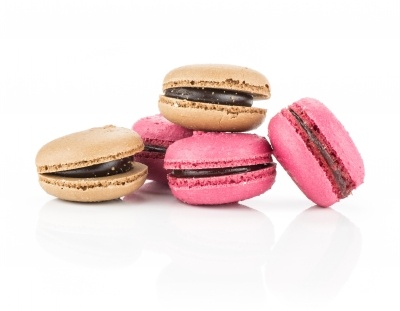
Aquafaba is probably one of the most useful ingredients vegans rely on most of all in cooking. It is a very effective egg white replacer and is being used to prepare all those hard to make products like meringues. waffles and mayonnaise. It can also be used to replace milk even in some recipes.
What is aquafaba? It is the water that chickpeas and other beans have been cooked in. When you empty a can of chickpeas for example, I’m sure you will see a viscous slight buff coloured liquid. To be honest if you want to know more, look at the Aquafaba web-site for ideas on its use.
Instead of throwing the liquid from a can of chickpeas down the drain, why not keep it for just those very foods that need an egg white. If you need to make it and don’t want the flavour notes from the can, just soak the chickpeas in water overnight. The amount of water to use is double the volume of the chickpeas. Make sure the container is airtight. Drain the chickpeas, boil them and use in other recipes. Aquafaba keeps for about a day when chilled in the refrigerator, otherwise freeze and then thaw when needed.
When you think about recipes where eggs are needed, you probably will give yourself a brain ache. I can think of most baked goods, pasta and noodles and dairy desserts as well as cakes. Using egg always gave the cook a certain degree of texture especially a soft, plump feel to the bake. Some colour is also important. Anybody using aquafaba will be attempting to replicate these results in their cooking and that’s not easy.
A french chef Joël Roessel began experimenting with the cooking waters from various canned products as he was looking for a suitable vegan egg white replacer. I think the use of aquafaba received a great deal of publicity when it was reported back in 2014 in various recipes on the French web-site www.revolutionvegetale.com – that’s certainly when I spotted it. After that, two french scientists then blogged about aquafaba on their YouTube channel. They produce a chocolate mousse from a foam they literally whipped up. Then it is reported that a US engineer called Goose Wohlt took the idea further to produce vegan meringues. The name aquafaba comes from him ! Now the ingredient is being thoroughly tested and it wont be long before considerable research is conducted on the material.
It has been analysed to some extent but there is probably a lot of inconsistency in its production. Different canning processes along with different varieties of chickpea, even seasonal variation must have an impact. Nutrition information is limited but it wont be long before it is published. Aquafaba is generally 94% by weight water and the remainder is 1.5g/100g protein, 0.5g/100g ash with the rest being various carbohydrates (simple and complex) (Shim et al., 2018). The protein fraction is probably the most important element because egg white contains various albumins and it is likely the aquafaba has similar proteins in terms of functionality.
Look on the market shelves and you might start seeing aquafaba based products. In the USA, Faba Butter was launched at the 2018 Winter Fancy Food Show. Essentially is mainly coconut oil but there is a small amount of aquafaba as the all important emulsifier. The product is produced by Fora who purchase aquafaba for their products from hummus producers who would normally have thrown the cooking water away. Chefs have described using the butter to prepare croissants which must be one of the most fat intensive baked goods around and demanding exceptionally good handling of the fat layers. By the way FDA regulations define a butter as containing 80% milk fat by weight.
If you add some salt when whipping egg white or aquafaba you can improve the foam stability and almost prevent foam collapse (Behera et al., 2014). I mention this because it is a tried and tested method which had not been adopted by many because of the salt reduction requirements for many. the foaming is due to the presence of natural saponins.
References
Behera, M.R., Varade, S.R., Ghosh, P., Paul, P. & Negi, A.S. (2014). Foaming in micellar solutions: effects of surfactant, salt and oil concentrations. Industrial & Engineering Chemistry Research, 53, pp. 18497–18507
Revolution vegetale (2014). Mousses–Isolats de proteins. http://www.revolutionvegetale.com/fr/non-classe/mousses-isolats-deproteines/. (visited on 19 September, 2018).
Shim, Y.Y., Mustafa, R., Shen, J., Ratanapariyanuch, K. & Reaney, M.J.T. (2018). Composition and properties of aquafaba: water recovered from commercially canned chickpeas. Journal of Visualized Experiments, 132(e56305), pp. 1–14


Hi to you all! I am trying to make a vegan angel cake. It calls for creaming the sugar with the butter and adding in the equivalent of egg whites in the form of aquafaba. I’ve been doing a ton of research online to get it right but some folds are saying it needs to be whisked to get it nice and foam like. Another web-site said it should be like a whisked stiff peak but that does not fit with the recipe I am working with. Would need some help with this but I thought having read your article you could throw more light on the situation.
Hi Wyn. If the recipe is asking for egg whites, I would whisk in the aquafaba. Whipping or whisking aquafaba is very similar to using egg white but I know from experience that it takes longer to get a decent peak to be stiff enough to then fold in. Given you have a recipe with egg substitutes, it will be a bit of trial and error simply because angel food cake requires some type of meringue like aerated product to give it the lightness and crumb expected. You can see plenty of recipes out there which give the exact proportions of whisked aquafaba needed so that would be a good starting point. We had to have a few attempts before we got the proportions right.
By the way, if the aquafaba liquid is too think just add more water to get a runny consistency and then whisk. I would also use a mechanical/electrical device to take out all the donkey work as well.